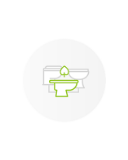- Learning Centre
- Back
- Why Composting Toilets
- About Greywater
- Frequently Asked Questions
- Types of Composting Systems
- Urine Diversion Application
- Bulking Agents & Dosing Guide
- Passive Ventilation Design Parameters Guide
- Room Ventilation and Extraction Systems Guide
- Mobile Composting Toilet Management and Spill Containment Procedures
- Advice on the Consent Process
- Blogs
- News
- Customer Service
- About us
- Contact
- Finance
- All Products
- Back
- Learning Centre
- Back
- Why Composting Toilets
- About Greywater
- Frequently Asked Questions
- Types of Composting Systems
- Urine Diversion Application
- Bulking Agents & Dosing Guide
- Passive Ventilation Design Parameters Guide
- Room Ventilation and Extraction Systems Guide
- Mobile Composting Toilet Management and Spill Containment Procedures
- Advice on the Consent Process
- Blogs
- News
- Customer Service
- About us
- Contact
- Finance
- Sale
- Wastewater Packages
- Tiny House Toilets
- Residential Toilet Solutions
- Commercial Toilet Solutions
- Recreational Vehicle Toilets - RV's
- Camping & Temporary Toilets
- System - Accessories & Parts
- System - Consumables
- Grey Water Technology
- Public & Domestic - Buildings & Facilities
- Blackwater / Septic System Technology
- UV / Filter / Water Purification Systems
- Hand Basins
- Gardening Tools
- All Products
- Back
- Sale
- Wastewater Packages
- Tiny House Toilets
- Residential Toilet Solutions
- Commercial Toilet Solutions
- Recreational Vehicle Toilets - RV's
- Camping & Temporary Toilets
- System - Accessories & Parts
- System - Consumables
- Grey Water Technology
- Public & Domestic - Buildings & Facilities
- Blackwater / Septic System Technology
- UV / Filter / Water Purification Systems
- Hand Basins
- Gardening Tools
- All Products
- Back
- Manufacturer
FAQ
Composting Toilet Myths & Maintenance: Your Top FAQs
Get clear answers to common composting toilet questions—debunking long drop myths, visibility concerns, odor control, toilet paper use, cleaning methods, and the best cleaners.
Aren’t composting toilets the same as long drops?
No, they are not. Long drops use an anaerobic decomposition method, which is extremely wet and slow. The microbes involved in this process produce methane, ethane and sulphur gases, the smell of which is less than pleasant. Because of this slow decomposition, the long drop has a pollution field of approx. 15 metres radius from the initial hole in the ground, and has the potential of seeping into underground waterways.
A composting toilet is aerobically decomposing, meaning it is relatively dry. The microbes in aerobic decomposition release gases such as oxygen and carbon dioxide, the smell of which is far less putrid, and the polluting effects significantly smaller. Composting toilets also yield a dividend-rich, soil-like product, ready to go on the garden.
If you have further questions, comments, or queries, please Contact Us
Waterless Composting Toilets NZ Limited | Copyright © Last Edited 21/07/2022
Can I see down the toilet like some long drops?
You cannot see the compost pile of a split-system (under-the-floor) as the composting chamber sits below the floor and is separated from the pedestal (toilet fixture) by a black chute - the composting chamber is simply too dark and too far away to see its insides. However, we don't recommend installing lights directly above the toilet as this can illuminate the compost mass at the bottom of the system and make it visible.
You can see into some self-contained systems (on-floor), depending on whether or not it has chamber screens.
If you have further questions, comments, or queries, please Contact Us
Waterless Composting Toilets NZ Limited | Copyright © Last Edited 21/07/2022
Do waterless composting toilets smell?
No. All our systems are actively vented with a fan that runs 24/7. The fan creates negative air pressure flow which draws air from the room, into the toilet, and out through a pipe above the building. Active venting vents out odours from the entire toilet/bathroom area and actually makes the system smell less than a conventional flushing toilet.
If you have further questions, comments, or queries, please Contact Us
Waterless Composting Toilets NZ Limited | Copyright © Last Edited 21/07/2022
Do I need special toilet paper?
No, regular toilet paper is absolutely fine - it will compost, and there isn't enough bleach in it to hurt the microbes in your compost.
If you have further questions, comments, or queries, please Contact Us
Waterless Composting Toilets NZ Limited | Copyright © Last Edited 21/07/2022
Can I still clean my toilet like a flushing toilet?
Of course you can clean your composting toilet, but you cannot use harsh chemicals to do so as they will harm your compost. Always use eco-friendly products for all your composting toilet cleaning needs. We recommend using Nature Flush Enzymes - a natural detergent which cleans your toilet and faciliates composting in the process by adding enzymes to the pile.
Nature Flush | Enzyme 750ml Trigger Pack (Enzymatic)
Nature Flush | Enzymes - Concentrate 1 Litre (Enzymatic)
Nature Flush | Enzymes - Concentrate 5 Litre (Enzymatic)
If you have further questions, comments, or queries, please Contact Us
Waterless Composting Toilets NZ Limited | Copyright © Last Edited 21/07/2022
Can I add water as part of the cleaning processes?
Yes, a little bit of water during cleaning won't hurt your compost.
If you have further questions, comments, or queries, please Contact Us
Waterless Composting Toilets NZ Limited | Copyright © Last Edited 21/07/2022
What are the best cleaners?
We recommend Nature Flush Enzymes for all your composting toilet cleaning needs. Nature Flush Enzymes is a natural detergent which not only cleans, but also facilitates the composting process through addition of enzymes.
Never use harsh chemicals, soaps, or homemade baking-soda based solutions to clean your composting toilet as these will harm the good bacteria in your compost.
If you have further questions, comments, or queries, please Contact Us
Waterless Composting Toilets NZ Limited | Copyright © Last Edited 21/07/2022
Custom Composting Solutions: Sizing, Installation & Approvals FAQs
Learn how to choose the right composting toilet for your needs, whether it’s easy to install and maintain, off-grid compatibility, greywater considerations, and local authority approvals.
Can I get a system that is sized and suited to my requirements?
Absolutely. We have systems ranging from those designed for single person use to ones fit to service high-volume use in commercial/public applications. You will find capacity and estimated usage indicators in the systems' manuals and on our website. If you need help in choosing the right system to fit your needs, give us a call and we will be happy to assist you.
If you have further questions, comments, or queries, please Contact Us
Waterless Composting Toilets NZ Limited | Copyright © Last Edited 21/07/2022
Are they easy to install and maintain?
WCTNZ™ prefers to see installation by trade professionals for the safety of users and the reliability of systems. However, many of our customers succeed in installing the systems themselves - all you need are basic building and plumbing skills. For more information on installation and pre-requisites, you can find installion manuals for each system on their respective product pages on our website.
Composting toilet maintenance is generally very straight forward. You will need to empty your composting chamber once it is full - regularity will depend on the system you have, and can vary between every couple of weeks, up to a year. You will also need to clean your toilet regularly, just like any other loo.
If you have further questions, comments, or queries, please Contact Us
Waterless Composting Toilets NZ Limited | Copyright © Last Edited 21/07/2022
What if I have no power or am off-grid?
All of our composting toilets have a fan that requires a bit of power - these can be run off mains or off a small solar panel. However, if there is enough wind, completely power-free operation is possible with the use of a wind-driven vent.
Heated composting toilets require more power and cannot be operated without it.
If you have further questions, comments, or queries, please Contact Us
Waterless Composting Toilets NZ Limited | Copyright © Last Edited 21/07/2022
How does a composting toilet affect what system I use for greywater?
Composting toilets have their own land application via leachate drain, and are seldom plugged in to your greywater. This means blackwater is taken care of and you need to deal with greywater from the rest of the house only. If you need greywater solutions, give us a call.
If you have further questions, comments, or queries, please Contact Us
Waterless Composting Toilets NZ Limited | Copyright © Last Edited 21/07/2022
Will the system be acceptable to the Local Authority for building approval?
All our composting toilet systems apart from the Bambooloo, NL2 & CM2 (CM2 meets the Building Standard) are fully certified against the AUS/NZ Standards (AS/NZS 1546.2:2008) for Waterless Toilets. This means there are no problems with how the unit works as far as legalities are concerned. Systems that are certified against the Building Standard do not implicitly require Producer Statements, but a Producer Statement can be facilitated at a cost via our Consultancy Service.
District & Regional councils are the regulating bodies for on-site waste treatment, and will not generally permit on-site domestic wastewater treatment systems if you are/can be connected to the centralized sewer system (mostly in urban areas). This is known as the must-be-connected clause. However, this does not rule out the use of an on-site wastewater treatment system, especially if there is land available for effluent discharge (subject to rules) or a zero discharge system like a waterless composting toilet. You can apply for an exception under special circumstances. Where there is a must-be-connected requirement, the best option is for composting toilets to be used as backup/additional toilets (i.e. privy/garage toilet/abolution-block).
Where septic systems are acceptable, waterless composting toilets are too. If you are building or renovating, and are required to submit documents to the council for permission (consent), we are happy to supply you with any WCT system supporting documents the council may need for your application. Most product listings have these documents available for download on our website (under Attachments).
If you have further questions, comments, or queries, please Contact Us
Waterless Composting Toilets NZ Limited | Copyright © Last Edited 21/07/2022
Smart Composting: What to Add & What to Avoid FAQs
Discover the best materials for a healthy composting system—bulking agents, bacteria, and whether worms, food scraps, or sanitary products belong in your toilet. Plus, what to avoid!
What materials are recommended for use as bulking agents?
Some systems require specific mixtures of bulking agents, but generally, we recommend the use of untreated wood shavings, coco peat, peat moss, or a mixture of these. If available on the property, you can also use onsite compost browns for the ultimate sustainability model.
We do not recommend sawdust, as it clumps together and can plug the leachate drain. Food scraps, hay and grass clippings are also not desirable as they can attract insects and other potentially unwanted pests.
If you have further questions, comments, or queries, please Contact Us
Waterless Composting Toilets NZ Limited | Copyright © Last Edited 21/07/2022
Do I need to add special bacteria?
No, all bacteria needed for decomposition are naturally present in the materials of your compost pile (humanure and bulking agent). If, however, you accidentally kill the microbes in your compost (for example, by adding chemicals to the compost), we can provide a “starting bacteria” mix to boost the compost pile back into action.
If you have further questions, comments, or queries, please Contact Us
Waterless Composting Toilets NZ Limited | Copyright © Last Edited 21/07/2022
Things NOT to add to your composting toilet system!
The only things going into your composting toilet should be human exreta, bulking agent, and toilet paper.
We do not recommend addition of any foreign objects. Never add the following to your composting toilet:
X Wet wipes
X Sanitary pads or tampons unless 100% organic-based
X Nappies
X Food Scraps
X Cigarette butts or ash from a fireplace
X Cleaning water eg. mop water
X Inorganics in general
X Chemicals or soaps
If you have accidentally killed your compost pile by adding something you shouldn't have, call us, or find our recovery kits under Consumables.
If you have further questions, comments, or queries, please Contact Us
Waterless Composting Toilets NZ Limited | Copyright © Last Edited 21/07/2022
Will female sanitary items compost?
As a rule, we do not recommend the addition of any foreign objects to the compost. Regular sanitary pads/tampons do not break down, and even "organic" ones are not always 100% compostable. If pads/tampons don't break down, they will pose a sanitary problem when handling your compost as you will have to screen them out before the final land application (burying).
If you have further questions, comments, or queries, please Contact Us
Waterless Composting Toilets NZ Limited | Copyright © Last Edited 21/07/2022
Can I use worms and/or food scraps?
We don’t recommend putting worms into your composting toilet. Worms are a higher life form and need more care. The compost pile of a composting toilet can be too dry for them, and if the toilet is left unused for periods of time, the worms may suffer for lack of food. If you really wish to keep worms, you will need to ensure that they have constant food supply, and that the compost is wet enough for them (you may need to add extra water to the pile).
We don't recommend addition of food scraps as this can attract flies.
If you have further questions, comments, or queries, please Contact Us
Waterless Composting Toilets NZ Limited | Copyright © Last Edited 21/07/2022
End Compost: Safety, Handling & What to Expect FAQs
Is compost from your toilet safe to handle? Will you have a lot after 12 months? Find out how composting toilets process waste and what to expect when managing the finished product.
Is the end compost safe to handle?
Absolutely. By the time the compost is ready for its final land application (burial), the materials within have been effectively decomposed and aged appropriately - all pharmaceuticals and human viruses have been absorbed and eaten up in the process. Microbial competition destroys human pathogens and microbes in composting humanure, and viruses cannot exist outside of the human body for more than 48 hours. The composting process also condenses colloidal heavy metals (i.e. from pharmaceutical drugs), meaning that when the soil is spread on the ground, any remaining heavy metals are not only well below toxic levels but are in a bound state, too heavy for a plant to reabsorb through their tiny feeding roots. Once the humanure compost is in the ground, worms will continue to break it down, further transforming the compost into soil.
Compost removed from some systems may require further maturation prior to burial. This can be done in a secondary treatment system set up onsite in the form of two composting bins - fill up one bin for a year, then let it sit and mature its contents for another year before you bury it. While the first bin matures, fill up the second bin.
Note: All systems come with different retention times therefore it is best to speak with us to get expert advice about how best to use each system for maximum safety and best on-site waste management practice.
Note: its best practice and a standards-compliant activity to compost for 12 months but compost free of human pathogens can occur in 3 months under ideal conditions. We do not assume these conditions are met, but it’s important to understand the power of composting.
If you have further questions, comments, or queries, please Contact Us
Waterless Composting Toilets NZ Limited | Copyright © Last Edited 21/07/2022
Will there be lots of compost after 12 months?
No. Once fully composted and matured, the end amount of compost is only a fraction of the materials that went into it initially. As compost decomposes, it is constantly shrinking, and can reduce in size by up to 90%. On average, a single person will produce 10L of fully matured compost solids per annum.
Note: depending on the climate and mitigating factors the compost will not necessarily have reduced by 90% - this effect is seen in Continuous Composting Systems, which have large capacity chambers.
If you have further questions, comments, or queries, please Contact Us
Waterless Composting Toilets NZ Limited | Copyright © Last Edited 21/07/2022
News Letters
Monthly News: Current affairs in NZ wastewater
Monthly Promotion: Special & one-off deals
Monthly The Humanist: Tips, tricks & advice on composting toilets















